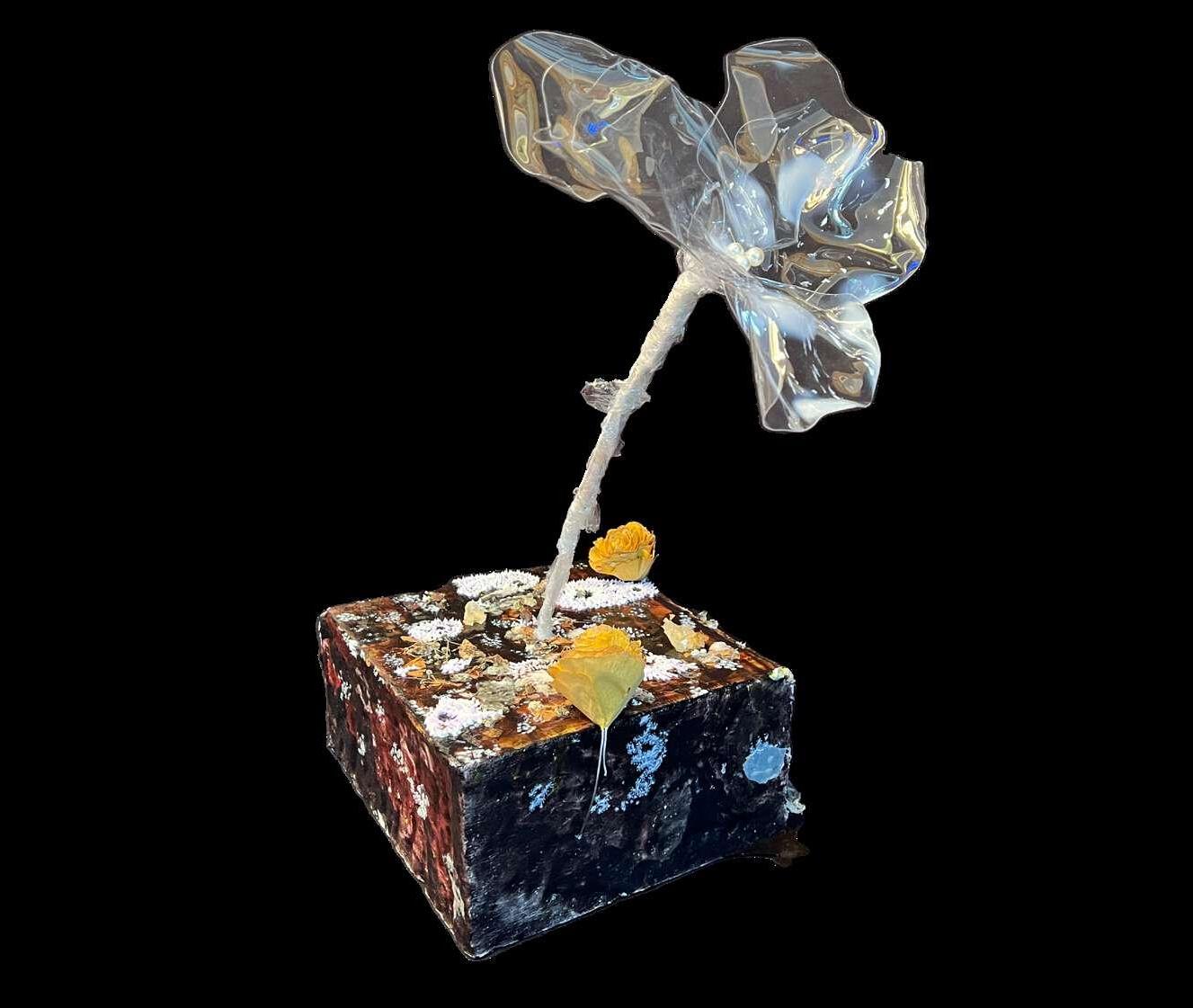
1 minute read
FERTILISED FOETUS BABY CHILD
Find out the most suitable material for making planet surface

Advertisement






Planet
Biological Material Test

1. Material: Vinegar, Cornstarch, Glycerine, Gelatine Powder, Dried Plant
2. Heat 250ml water to 90 degree. Add a few drops of glycerine, gelatine powder and cornstarch. Then stir to dissolve the starch and reduce the heat to low. Adding some vinegar. Simmer until the liquid reduces slightly and thickens to a light syrup. Now pour out all the mixture and wait for freezing.

The planet is used to place and hold the interactive flowers. Its surface is expected to simulate plant, which is composed of little round cells. It also looks like diseased human skin.
The planet surface imitates the flower rot and bloody diseased skin that is about to form some spots or scab. Also, both flower and skin have rough texture and even cracks, but still have some softness and moisture. This planet box is where creature birth, grow up, wither and die, so its state shows the living conditions which is affected by living things.

The planet is used to place and hold the interactive flowers. Its surface is expected to simulate plant, which is composed of little round cells. It also looks like diseased human skin.







Creature Interaction

Hand get close
Hand away from it
TOUCH UNTOUCH

The brightness of the light shined on light sensor decrease
The brightness of the light shined on light sensor increase
Stretch Loose
Flower becomes erect Flower bows
I used kt board to make a rectangular box as a base, create some small pits irregularly on it, then cover with extremely thin tissues layer by layer. These little bubbles imitate projections on skin or diseased plant, which is soft, small like deflated balloons.


These dried up ginkgo leaves were reused and turned into a flower by fixing them with wire and hot melt glue. I hope viewers could find different forms of vigour, hope and beauty in them.

On the second day of colouring, some irregular white or green mycelium is found growing on the planet surface.



A set of servo motors is used to control the direction of the flower by stretching the fishing line. The rotation of the control horn is controlled by a light sensor hidden inside the flower.


I have used two thicknesses of wire to imitate the stems of the plants, while the softness of the wire is better controlled artificially. Light Sensor




















